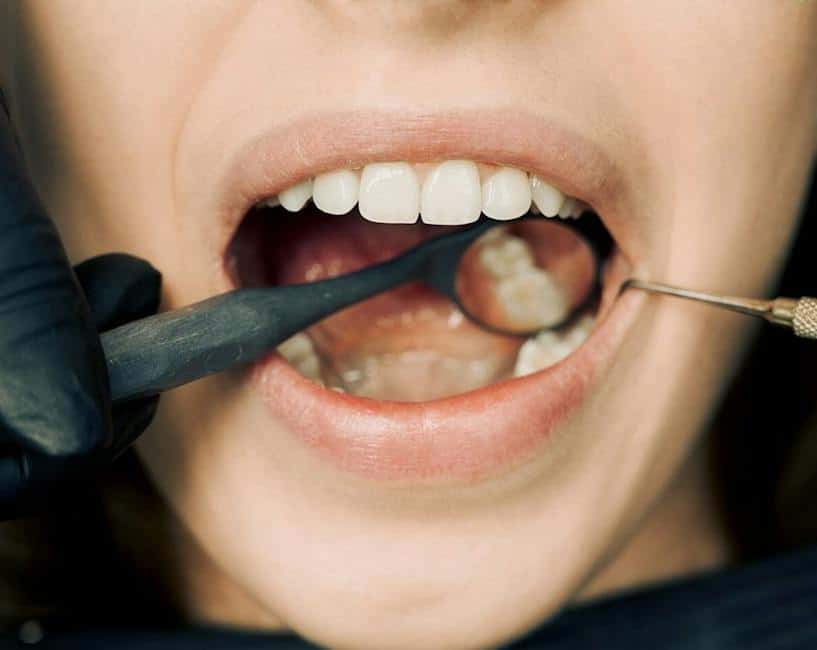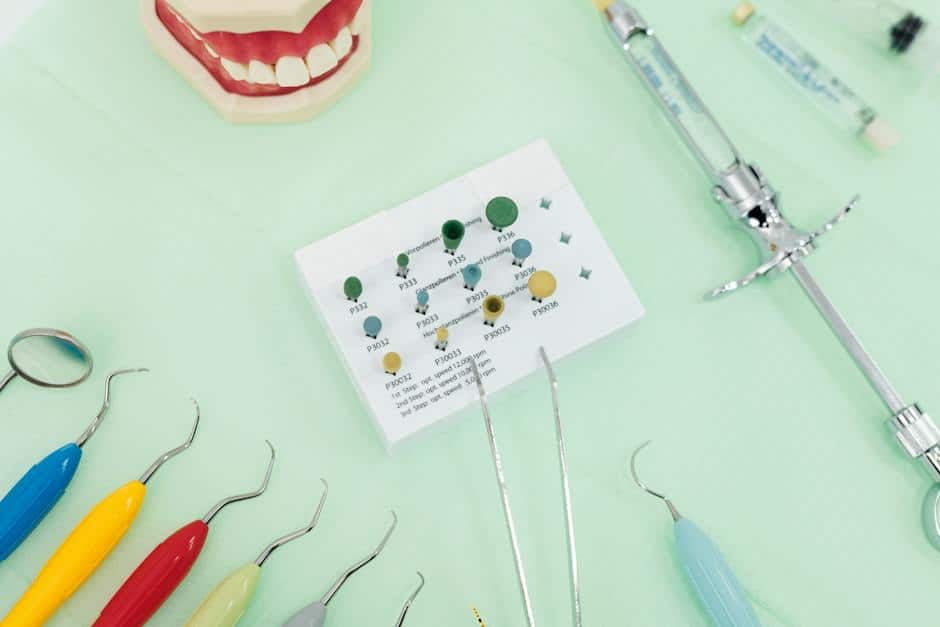
03 Dec Handling Tooth Abscess Emergencies: A Guide
Excellent oral health is of paramount importance to your overall well-being, and a tooth abscess is an oral health concern that warrants your full attention. This common yet severe dental emergency can yield excruciating pain, making it vital to cognize the symptoms and call for immediate intervention. Our focus here is to help you understand the early warning signs of a tooth abscess, such as a severe toothache; sensitivity to heat and cold; persistent bad breath; fever; painful chewing; swollen lymph nodes, and more. Additionally, we aim to guide you through temporary home remedies for immediate relief and highlight when and how to seek professional dental care.
Recognizing the symptoms of a tooth abscess
Navigating the Manifestations of Dental Abscess: A Comprehensive Guide
An abscessed tooth, a clinical malady often encountered in the vast field of dentistry, typically arises as a defensive response of the body to bacterial invasion within the oral cavity. Understanding the nuances of this condition’s symptoms provides critical insight for individuals seeking to maintain optimal oral health. This article thus aims to delineate the common signs and symptoms associated with dental abscesses, fostering enhanced identification and early intervention.
It is pivotal to note that the severity and progression of symptoms can be variable, contingent on the individual’s immune response and potential underlying systemic health conditions. Symptoms generally emerge when the protective mechanisms housed within the dental pulp are overwhelmed by proliferating bacteria, leading to infection and subsequent formation of pus.
Pain, pronounced and often relentless, serves as one of the primary indicators of a tooth abscess. A tooth or gum that aches persistently, intensifying particularly in response to pressure or thermal stimuli like hot or cold food items, warrants serious consideration. The pain, initially confined to the affected region, may subsequently radiate, extending to the jaw, neck, or ear on the same side.
Sensitivity, both thermal and mechanical, represents another significant hallmark. An increase in sensitivity or pain when biting down often signifies the potential presence of a dental abscess.
Swelling and redness in the mouth or face may also signal an abscessed tooth. The gums around the tooth could appear swollen or pus-filled, exhibiting a characteristic red or pink hue, often accompanied by an open, draining sore on the side of the gum.
Fever is another telltale symptom not to be overlooked, resulting from the body’s systemic response to infection. Individuals with a dental abscess might experience a low-grade or high-grade fever. This heightened body temperature often signifies an ongoing battle between the body’s immune system and the invading bacteria.
Additional symptoms linked to abscess include dysgeusia (a distorted sense of taste), halitosis (bad breath), and potential difficulty with opening the mouth or swallowing. If any of these symptoms are observed or experienced, immediate dental consultation is typically warranted.
In conclusion, a tooth abscess presents a spectrum of symptoms, ranging from pronounced pain and sensitivity to swelling, fever, and more. These symptoms provide invaluable clues toward the diagnosis of the condition, paving the way towards effective and timely intervention. The recognition of these manifestations is a testament to the profound impact of understanding human health at its elemental level, a crucial step in nurturing a healthier society.

Immediate home remedies for tooth abscess
With a comprehensive understanding of the many facets associated with dental abscesses, let’s now delve into the realm of immediate, temporary solutions for their alleviation.
The initial course of action for managing a tooth abscess invariably involves pain management. One readily-available technique is the use of over-the-counter (OTC) pain relievers such as acetaminophen (Tylenol) or ibuprofen (Advil). These help reduce pain intensity and inflammation, providing a brief respite from the ongoing ordeal. However, it must be remembered that excessive or chronic use can lead to serious side effects.
A subtler approach lies in the utilization of a cold compress. When applied to the affected area for 15-minute intervals, a cold compress can help numb the region, thus temporarily lessening discomfort. Nevertheless, the application of extreme cold can potentially exacerbate sensitivity, so moderation is imperative.
Moreover, maintaining impeccable oral hygiene cannot be overstated. Regular tooth brushing with a soft brush, flossing, and use of an antiseptic mouthwash all contribute to creating an environment hostile to bacterial overgrowth, thereby inhibiting the progression of infection.
Closer to nature’s remedies, rinsing your mouth with a saltwater solution can also be beneficial. This natural disinfectant aids in drawing out some of the pus and reduces inflammation. A half-teaspoon of salt in a cup of warm water, swished around the mouth for a couple of minutes before spitting out and repeated throughout the day can be of immense assistance.
Also, a clove of garlic crushed and applied onto the afflicted area or clove oil on a cotton ball pressed against the sore tooth can provide temporary pain relief owing to their natural antiseptic and numbing properties.
It is imperative to emphasize that all these methods serve merely as temporary respite and by no means are they a substitute for definitive, professional dental treatment. The importance of seeking prompt dental intervention cannot be overstressed since a dental abscess poses a potential threat to systemic health if unchecked. These remedial actions are designed to provide immediate relief and manage the discomfort until one can access professional dental consultation and treatment.
In conclusion, knowledge about these immediate care strategies offers a certain measure of control and comfort in the face of an often unexpected and painful dental predicament. It does well to recall however that they are but an interim relief while the pursuit of prompt professional dental care remains paramount in addressing dental abscess comprehensively and effectively.

When and how to seek professional dental care
Once dental abscess symptoms have been identified—and self-care methods to provide temporary relief have been deployed—signs indicating the need for immediate emergency dental care become paramount. It is crucial that these signs are not overlooked, as they can mark a severe medical condition. The intent of this article, thus, is to delineate these signs which should prompt you to seek immediate dental intervention.
One of the most critical indications of a necessity to seek immediate professional care is when the symptoms of a dental abscess persist beyond two days in spite of self-care methods, signaling a severe, deeper infection that is progressing unabated. Involvement of the facial spaces further necessitates prompt dental care. This is clinically identifiable as noticeable difficulty in breathing, speaking, or swallowing due to the progression of swelling, which in turn indicates a spreading infection that can be potentially life-threatening if not remedied expeditiously.
Similarly, if an unexplained rash or hives appear on the skin, body and/or face alongside abscess symptoms, urgent dental care should be procured forthwith. This could represent an allergic reaction or a systemic response towards the infection, further implicating the need for professional intervention.
Unexpected weight loss, fatigue, night sweats, and persistent fever, which are hallmark signs of systemic infection, should also not be ignored, as they may mean that the dental abscess infection has spread to the bloodstream—a serious condition known as a bacteremic infection. It is crucial to recognize that such symptomatic manifestations are beyond the scope of dental practice and therefore, call for immediate medical attention.
Moreover, a marked change in mental status, such as disorientation, confusion, or difficulty staying awake should also catalyze emergency dental care, as these symptoms could signify an infection spreading to the brain, a rare but severe complication.
To encapsulate, a dental abscess is more than a mere inconvenience or a cosmetic concern—it is a serious condition with potential systemic complications and can pose an imminent threat to one’s overall health if left untreated. In the presence of aforementioned indicators, seeking immediate emergency dental care becomes not a choice, but a necessity. This underscores the crucial nature of understanding one’s own health and having the critical insight to seek help when necessary. The saying goes that knowledge is power and, indeed, when it comes to navigating the intricacies of a dental abscess, information could very well be one’s most robust defense.

Ultimately, understanding tooth abscess symptoms and immediate care steps not only mitigate the pain but also decreases the chance of complications. However, it is crucial to remember that these are temporarily reliefs and seeking professional dental care is vital to the optimal resolution of this painful situation. From determining when it’s the right time to seek professional help to anticipating what a dental appointment may entail, it becomes easier to navigate this dental emergency. Whether it’s a root canal treatment, tooth extraction or incision and drainage, getting appropriate dental care is an absolute necessity. Awareness and prompt action safeguard dental health and ensure a faster road to recovery from a tooth abscess.


Sorry, the comment form is closed at this time.